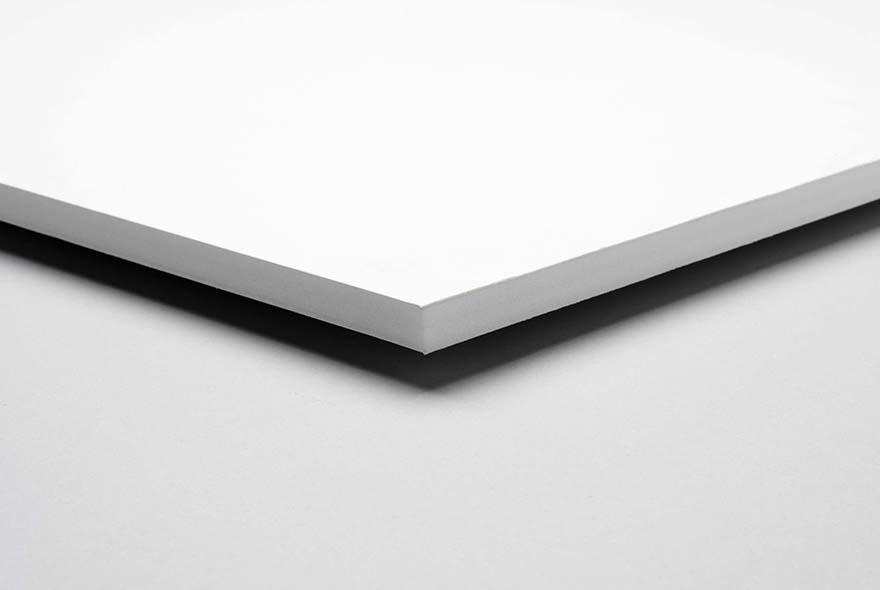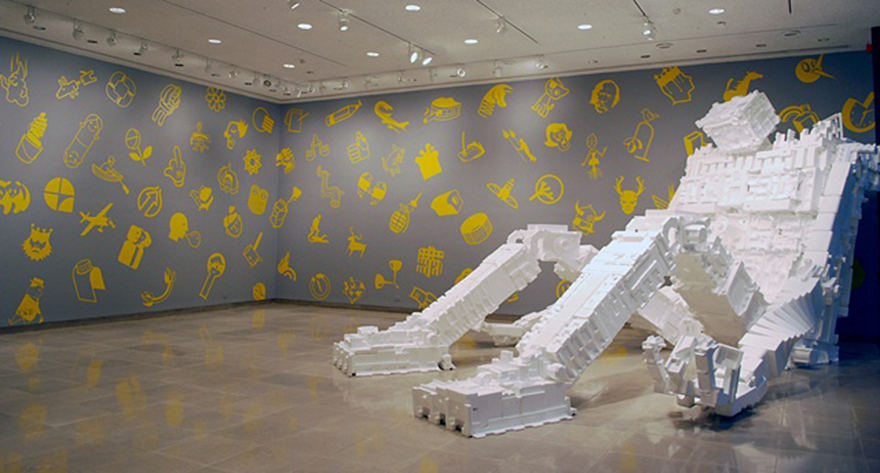
The ID Student's Friend: Foamcore, Blue Foam, and Others

If you're an industrial design student, now that school is back in swing you've probably got your hands on some foamcore or blue foam. Did you ever ask yourself what that stuff really is?
Let's start with the first one. The original foamcore was created and marketed in 1957 by the Monsanto Company. (Yes, that Monsanto, the leader in the genetically modified seed industry.) Their original brand name for the material was: Fome-Cor.

Foamcore, aka foamboard, is lightweight, easily cut, and surprisingly strong. In it's most basic form you'll find three layers: An inner layer of polystyrene foam, bookended by two sheets of clavcoated paper or simply kraft paper. The surface paper is slightly acidic but you can find acid-free versions for archival photography.
Junior and Senior ID majors already know this, but for you sophomores or first-year grads: One must be careful if using glue or paint with foamcore. Because glues, especially superglues, and paint cannot adhere to foam, it will actually melt and dissolve it. What you need to use are spray adhesives like 3M's Super77 or Loctite. Some might try using hot glue but do so with caution, as the heat can warp the board.

Foam, without the -core, is another very common design material. There are three basic types that can be used for modeling: Pink, blue and yellow (or Balsa foam.) Pink and blue foam are similar, both made from expanded polystyrene—in fact this is how they are most often referred. Best known as Styrofoam (created by Dow Chemical), they are by far the most widely used. Polystyrene is probably the most common plastic used on the market, and it is also very slow to biodegrade, and so makes up one of the more unwelcome types of litter on this planet.
Extruded polystyrene is lightweight, durable and ideal for creating all kinds of design objects. It can be worked with a hot-wire cutter or saw, or even a simple x-acto knife. (Just make sure if you are doing a lot of cutting or sanding, to wear a fume-mask, because the fumes are toxic.) You can paint Styrofoam with acrylic or water-based paint, but avoid any solvent-based paint, as it will damage the foam.
 Credit: One of Michael Salter's robot sculptures made from recycled polystyrene.
Credit: One of Michael Salter's robot sculptures made from recycled polystyrene.Credit: One of Michael Salter's robot sculptures made from recycled polystyrene.
Styrofoam has a tightly formed closed-cell structure. "Closed-cell" simply means that that the gas forms discrete pockets bordered by the material (in open-cell foam the pockets are connected, like in a dish sponge, so they can be filled with whatever is around them, i.e., water). It's the closed-cell that makes this material so water resistant. All these qualities make is an extremely versatile material, used to build surfboards, camping beds, remote-controlled vehicles, or that project in your portfolio that's going to help you get a job after graduation. But hey, no pressure.
See also: How to Cut Foam: The Dumb Way, the Expensive Way, and the Brilliant/Inexpensive DIY Way
-
o3Favorite This
-
Q2Comment
K
{Welcome
Create a Core77 Account
Already have an account? Sign In
By creating a Core77 account you confirm that you accept the Terms of Use
K
Reset Password
Please enter your email and we will send an email to reset your password.


Comments